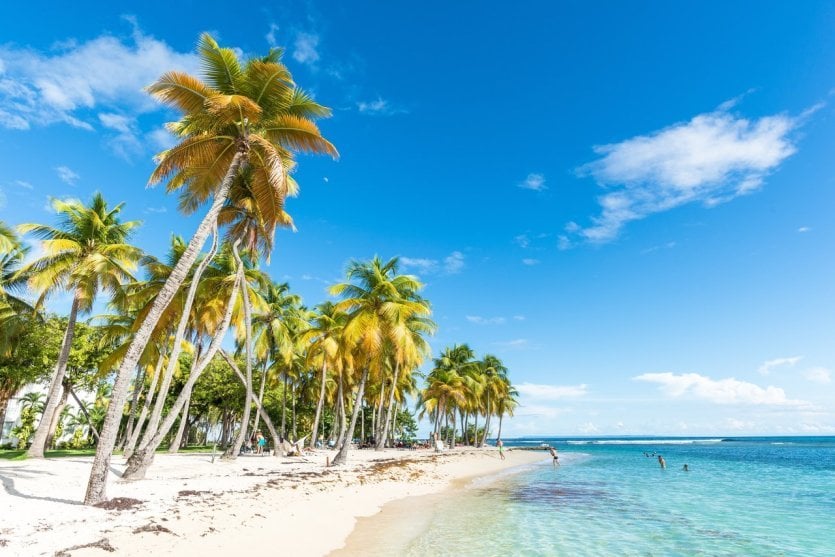
What to do in Guadeloupe The 19 must-sees© Jakob Fischer - Fotolia
Located in the heart of the Caribbean's Lesser Antilles, Guadeloupe is one of France's favorite destinations, and for good reason: the butterfly island of a thousand colors has something for everyone! Heavenly beaches bathed in translucent waters, lands that are sometimes lush, sometimes lunar, small islands with discreet coves and preserved traditions, and a tropical climate tempered by trade winds. Whether eaten, drunk or exhibited, the culture here has a strong identity that givesyou a change of scenery andthe impression of having been able to really get away from it all: in other words, of having experienced a real vacation, on the other side of the world!
1. Basse-Terre, the capital of Guadeloupe
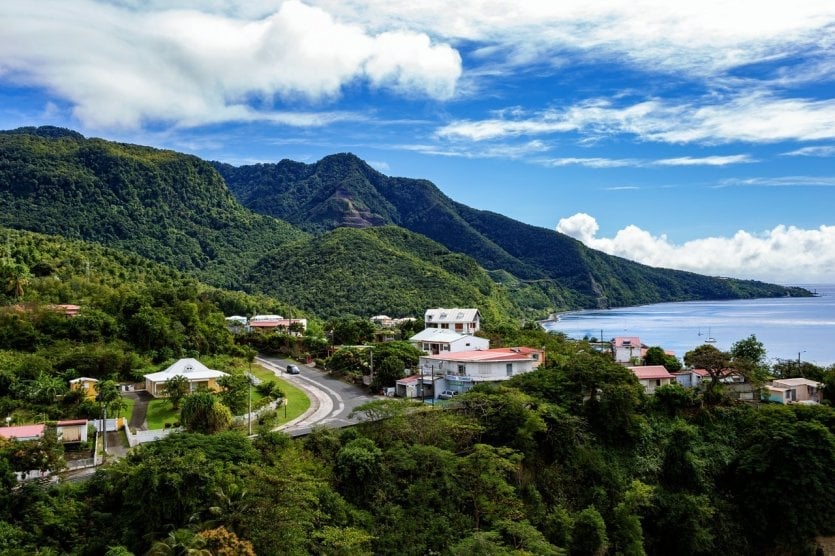
Basse-Terre, the capital of Guadeloupe© Iryna Shpulak - Adobe Stock
Situated in the south-west of the island of Basse-Terre, this town offers a guaranteed change of scenery thanks to its colonial architecture, lively port and large market. Listed as a "town of art and history", it has many surprises in store for visitors. During your visit, we recommend a visit to Fort Delgrès, a historic monument dating back to the 17th century, which offers a magnificent panoramic view of the city and the Caribbean Sea from its ramparts. You can also take a stroll along the Champ d'Arbaud, a former military training ground that is now a popular walking area for locals and tourists alike. The 18th-century Cathédrale Notre-Dame-de-Guadeloupe , with its volcanic stone facade and Baroque style, is also well worth a visit.
The Botanical Garden of Basse-Terre, the oldest in Guadeloupe, is also a place of wonder where you can stroll free of charge and discover a wide variety of exotic plants. And don't miss the Basse-Terre market, a veritable festival of color with its colorful stalls, where you can discover local products and a lively atmosphere.
2. Pointe-à-Pitre
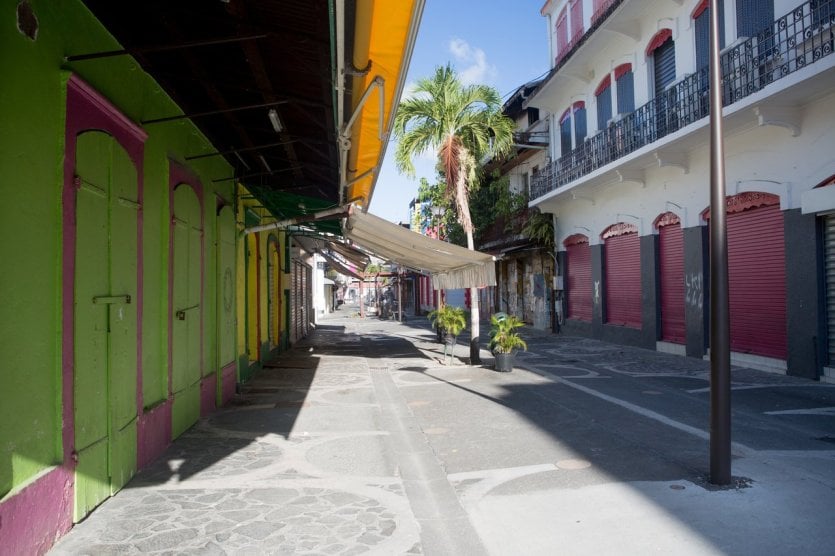
Typical streets in Pointe-à-Pitre© Jean-Marie MAILLET - Adobe Stock
Pointe-à-Pitre is a must-see because it's ideally located at the junction between Basse-Terre and Grande-Terre. You'll love strolling along its typical streets, some lined with colonial mansions, others with wooden Creole houses. Its markets are lively, cheerful and colorful, a liveliness you'll find again at nightfall in the Marina, where you'll find a host of bars, restaurants and nightclubs. In terms of culture, Pointe-à-Pitre boasts several museums, including the ACTe Memorial, the Caribbean Center for the Expression and Memory of Slavery, opened in 2015. A visit not to be missed.
Wondering where the name Pointe-à-Pitre comes from? What does it have to do with a Dutch fisherman? Find out all about the city's history and the answers to these questions on this historical guided tour, which we recommend you book!
3. Grande Anse Beach
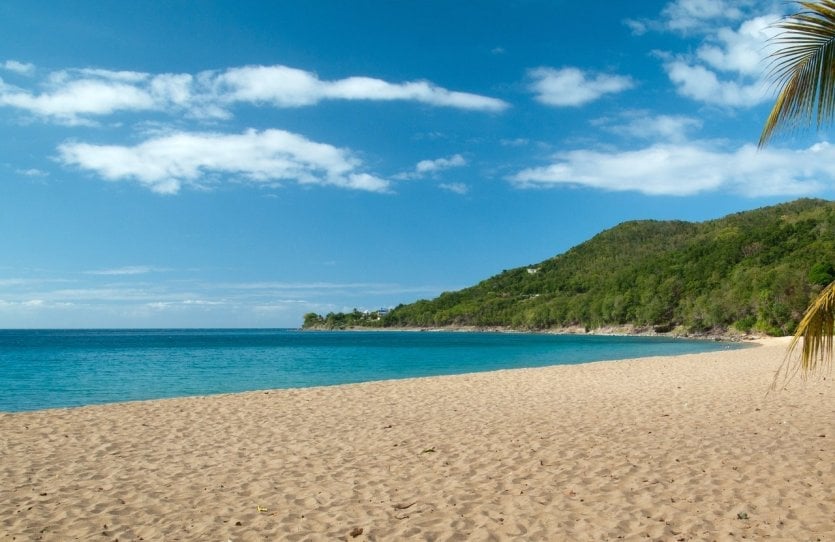
Grande Anse Beach© Sébastien Closs
On the west coast of the island of Basse-Terre, Grande-Anse beach is the longest and one of the most beautiful in the archipelago. Shaped like a half-moon, it is fringed by coconut palms and lush green hills that rise up from its stretch of fine sand. An idyllic setting for swimming in calm weather, you'll find showers and toilets as well as a few restaurants and "lolos", the traditional West Indian grocery stores. Take the time to stay until sunset, and you're sure to get some of the best shots of your stay.
4. La Soufrière, a must-see in Guadeloupe
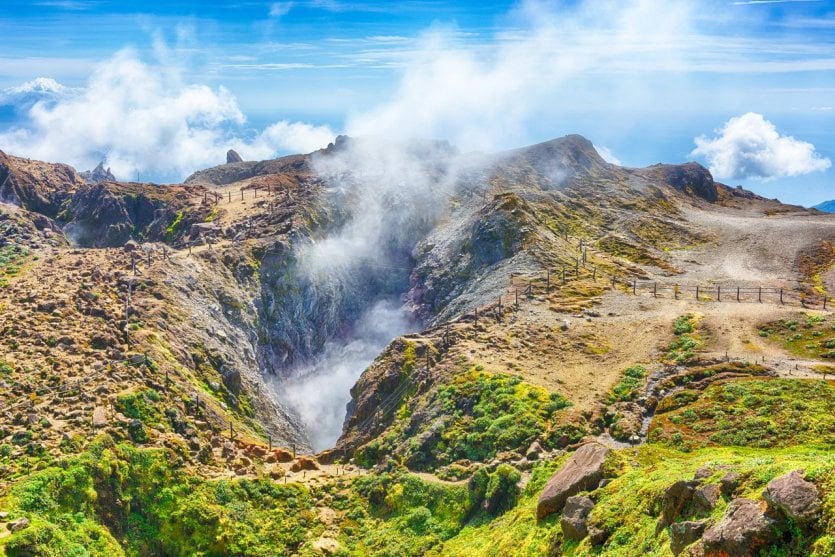
La Soufrière© Fyle - Fotolia(2)
Nicknamed "vié madanm la", which means "the old lady" in Creole, La Soufrière is the highest point in the Lesser Antilles at 1,467 meters above sea level. This active volcano is located within the Guadeloupe National Park, in the southern part of Basse-Terre; it has no real crater, but several eruptive vents from which sulphurous vapours, gases and hot springs escape. At its summit, the landscape is lunar and chaotic, and it's the only place with a 360° view of the mountain ranges and surrounding islands. Hiking around and on the volcano of La Soufrière is a very pleasant experience, offering the chance to see remarkable flora and fauna.
See the rainforest from above with an aerial tramway tour over Saint Lucia by click here !
5. La Désirade
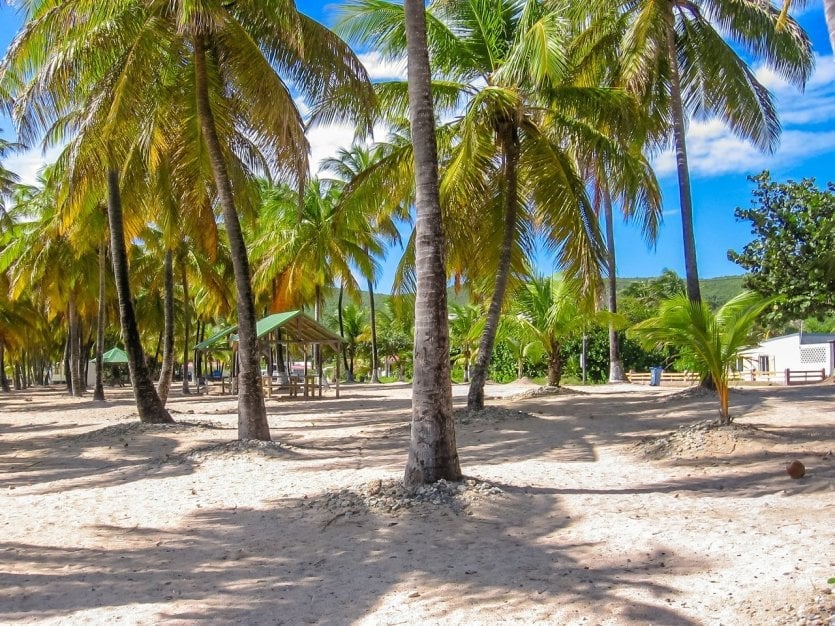
La Désirade© bennymarty
With such a pretty name, this small island is certainly the most authentic and wild of Guadeloupe. It is located around ten kilometers from the eastern tip of Grande-Terre and is only accessible by boat. Here, time seems to stand still, and tranquility reigns along its 11 km of varied landscapes between sea and cliffs. La Désirade is the first geological nature reserve in France's overseas departments and territories. It is also the kingdom of iguanas and a popular destination for divers, who marvel at its magnificent coral reefs.
6. Marie-Galante
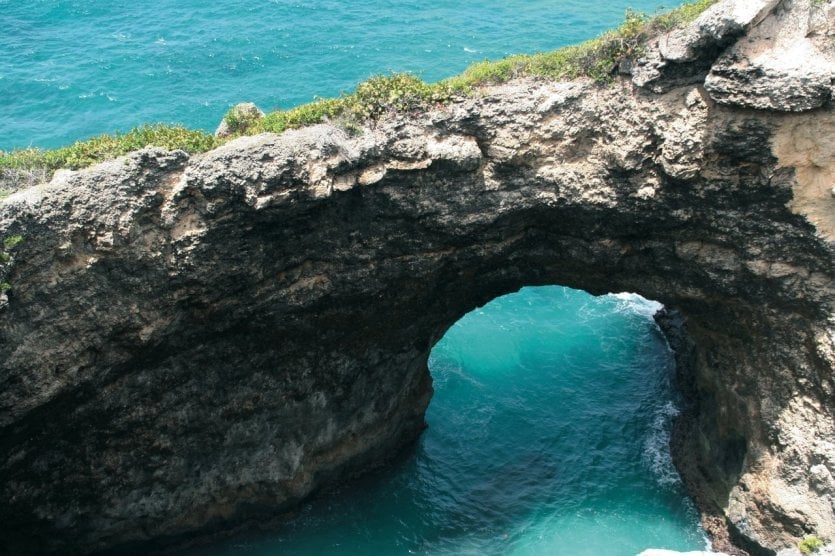
Marie-Galante© GILLES MOREL (7)
The name Marie-Galante conjures up images of Laurent Voulzy... Although it promises golden beaches, Marie-Galante is best known for its windmills and sugarcane farming, with rum tastings in the local distilleries! It's an unspoilt island that has kept its traditions, and you can still attend a cockfight or an ox-drawn competition... Marie-Galante has turned towards sustainable tourism and is also aiming to become 100% self-sufficient in renewable energy.
7. Les Saintes
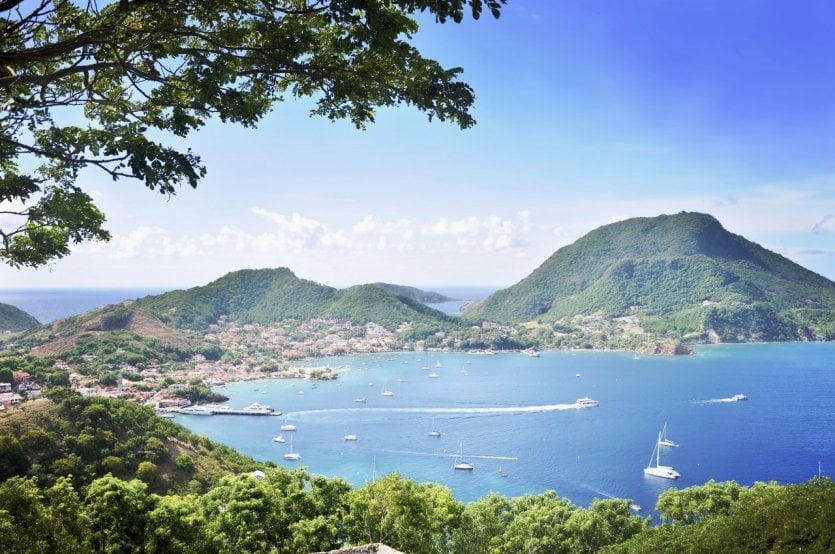
Les Saintes© Mableen - iStockphoto
The archipelago of Les Saintes is made up of 9 islands, only 2 of which are inhabited: Terre-de-Bas and Terre-de-Haut, whose bay is ranked among the most beautiful in the world. The island is pleasant and particularly colorful, from the facades of the houses to the multicolored fishing boats. The Fort Napoléon is also located here, offering an exceptional panoramic view of the entire archipelago. Terre-de-Bas is more discreet but just as pretty, and lends itself more to hiking and discovering crafts: here you'll find the finest salakos, traditional hats made from bamboo plant fibers.
Would you like to discover the Baie des Saintes, classified by UNESCO as one of the most beautiful in the world? We recommend that you this catamaran excursion! You'll be able to swim in the Caribbean waters with the sea turtles and enjoy a breathtaking view of the Saintes landscape!
8. Grand-Cul-de-Sac marin
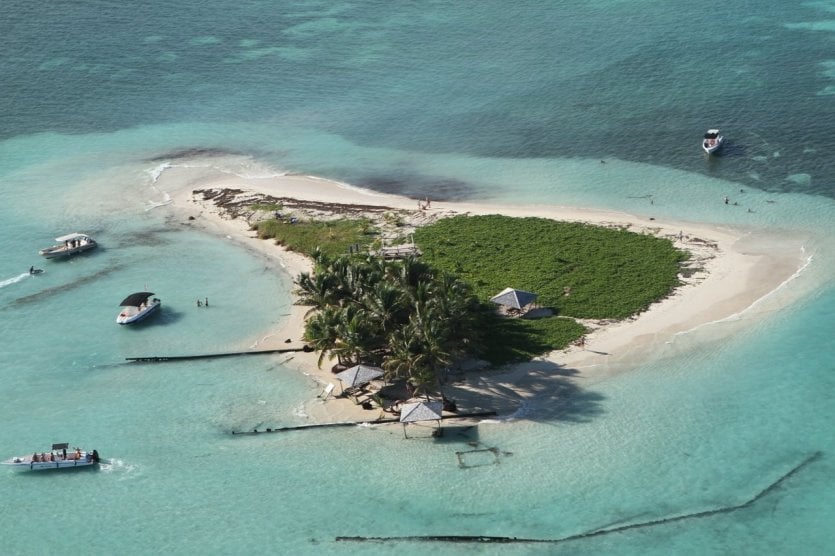
Grand-Cul-de-Sac marin© GILLES MOREL (7)
Grand-Cul-de-Sac marin is an exceptional nature reserve, classified as a World Biosphere Reserve by UNESCO. Covering an area of almost 15,000 ha, it is made up of mangroves, swamp forests, seagrass beds and a coral reef almost 40 km long. It's usually visited by boat or sea kayak to observe the many marine species and birds that nest in the mangroves. If you're lucky, you'll come across some pretty sea turtles while waiting for the return of the manatee, which the National Park is trying to reintroduce.
Discover the mangroves of Grand-Cul-de-Sac marin by booking here a paddleboard session to discover the mangroves!
9. Route de la Traversée
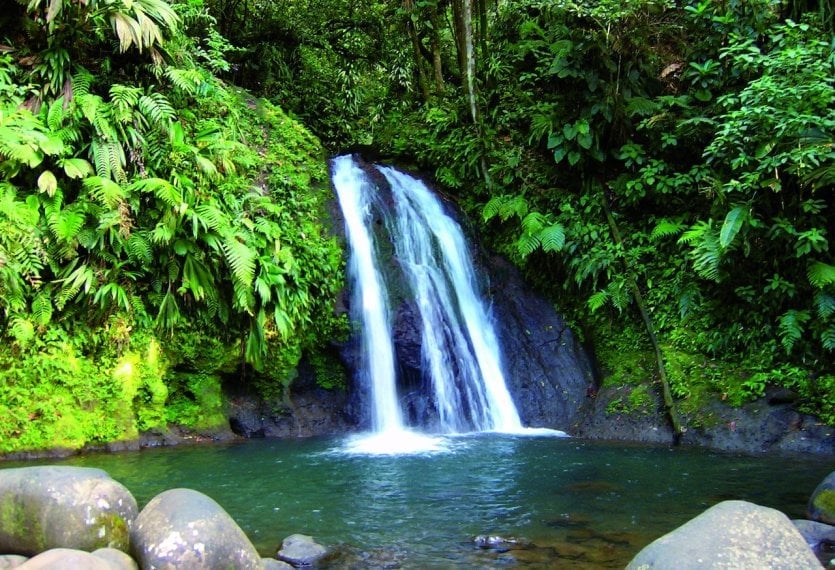
Route de la Traversée© Sarah MARCHAND - Fotolia
La Traversée is a mountainous road that cuts through Basse Terre, from east to west, for 17 km. It criss-crosses the tropical forest and passes a number of major sites: the Cascade aux écrevisses (crayfish waterfall), the Parc zoologique et botanique (zoological and botanical park) and the Maison de la Forêt (forest house) with its discovery trail. This lush forest is dotted with 300 species of tree, 250 species of fern and 2,700 species of flowering plants, including around a hundred orchids.
10. Sainte-Anne
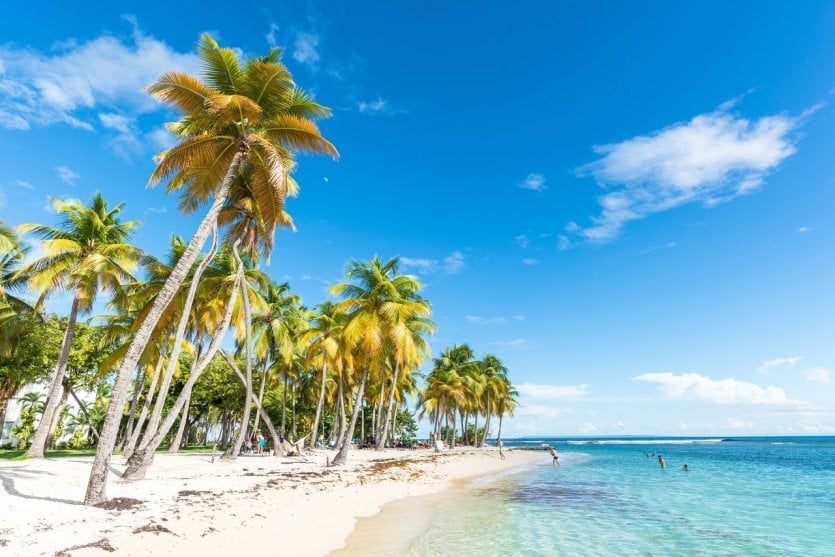
Sainte-Anne© Jakob Fischer - Fotolia
21 km from Pointe-à-Pitre, Sainte-Anne is one of Guadeloupe's largest seaside resorts. The scenery is worthy of the postcards you'll write from its white sandy beaches hemmed in turquoise water and lined with coconut palms. Its magnificent lagoon is protected by a coral reef on a coastline that stretches for over 15 km. A kingdom of water sports, you can even try your hand at flyboarding: a jet-powered watercraft that propels you out of the water like an Ironman!
Click here to to book a private photo session on La Caravelle beach in Saint-Anne!
11. The Cousteau Reserve for diving in Guadeloupe
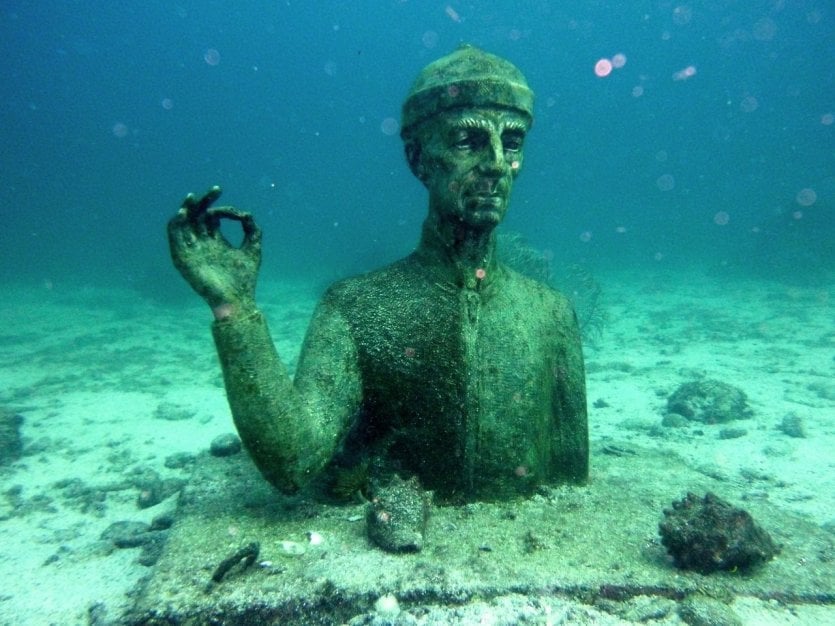
The Cousteau Reserve© Gregory CEDENOT - Fotolia
The Réserve Cousteau, named after its creator, has become a must for scuba divers, thanks to the exceptional richness of its seabed, which covers almost 1,000 hectares. Hundreds of species of tropical fish and mysterious shipwrecks can be seen at five major sites: the coral garden, the aquarium, the Japanese garden, Pointe Mahaut and the Franjack wreck. In January and February, the lucky ones can even hear humpback whales singing...
Book here your private jet-ski session with an instructor at Réserve Cousteau.
12. Visit the Parc Archéologique des roches gravées
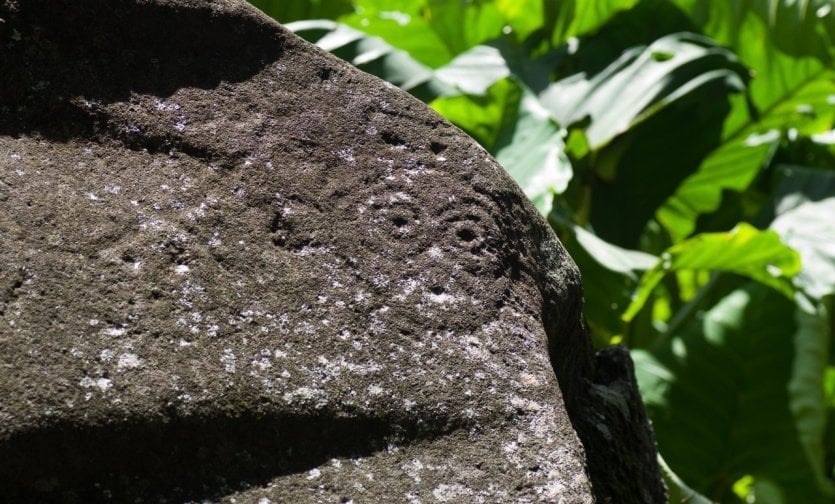
Parc Archéologique des roches gravées© Marylène - Adobe Stock
Located in the commune of Trois-Rivières, the Parc Archéologique des Roches Gravées is a site that has been classified as a historic monument since 1974, offering a fascinating footprint left by the archipelago's first inhabitants, the Arawak Indians. Probably dating from the 3rd or 4th century A.D., the inscriptions engraved by these ancient civilizations on volcanic rocks amid lush vegetation were discovered in the early 19th century. This site is of great importance for the history of the pre-Columbian Antilles. During a guided tour of this park, you'll have the chance toadmire over 230 engravings, known as "petroglyphs", dating back over 1,500 years. These petroglyphs provide invaluable information about the way of life of the Amerindian civilization that once inhabited the region. To get the most out of this experience, we recommend visiting the site early in the morning, when the light is softer, allowing optimal observation of the inscriptions on the rocks.
13. A stroll through the Deshaies Botanical Gardens
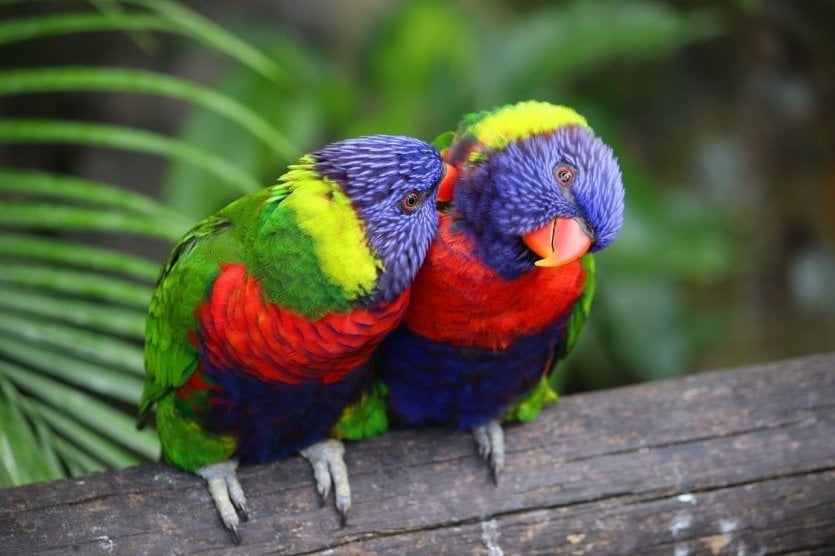
Birds at the Jardin Botanique de Deshaies© Tupungato - Adobe Stock
Located in the heart of Coluche's former estate and covering almost 7 hectares, the Jardin Botanique de Deshaies is an exceptional place that harmoniously combines botany and wildlife. This enchanting place is divided into several themed areas with numerous attractions to captivate young and old alike: a waterfall, a wall of water, a torrent, a pond where pink flamingos gracefully evolve, a pond adorned with water lilies, a village dedicated to macaws (parrots), an aviary and an enclosure dedicated to goats for the delight of children, located near the playground and snack bar. Stroll among majestic tropical trees and marvel at the beauty of flowers such as porcelain rose, hibiscus and orchid, accompanied by the songs of birds such as hummingbirds and blue macaws. This botanical garden and wildlife park is an enchanting place where nature blossoms in all its splendor, offering visitors a memorable and immersive experience at the heart of tropical biodiversity.
14. Visit the Porte d'Enfer lagoon
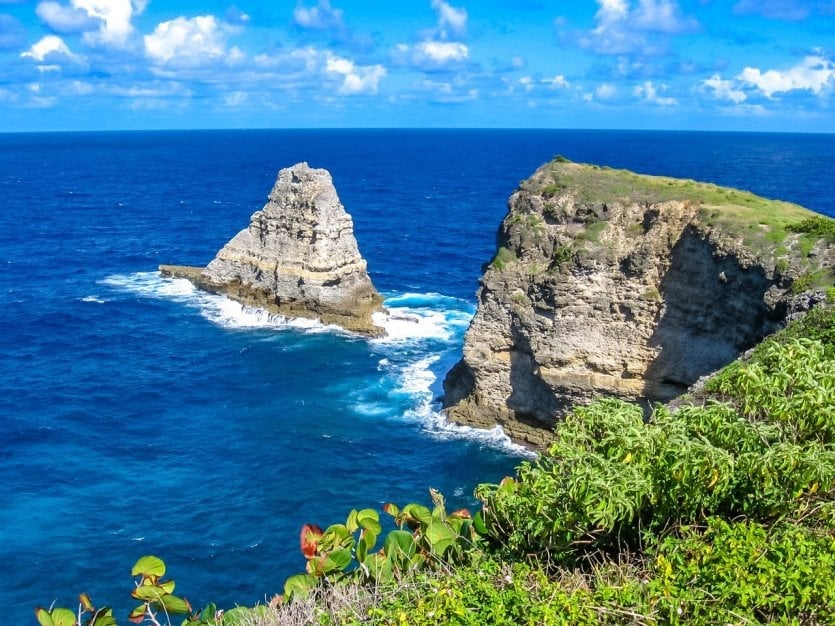
Porte d'Enfer lagoon© bennymarty - Adobe Stock
Located at Anse Bertrand in Guadeloupe, the Porte d'Enfer lagoon is a must-see in the heart of unspoilt nature. Don't let its name fool you, this natural site has all the charms of a little corner of paradise . You'll marvel at the breathtaking cliffs plunging into the Atlantic Ocean, while the crystal-blue waters give you a glimpse of the underwater wonders. Finish off the day with a visit to the Tou a Man Koko grotto (French for "Madame Coco's Hole"), just 15 minutes away, or enjoy a swim in the turquoise waters of the lagoon below.
15. Getting to the Morne-à-l'Eau cemetery
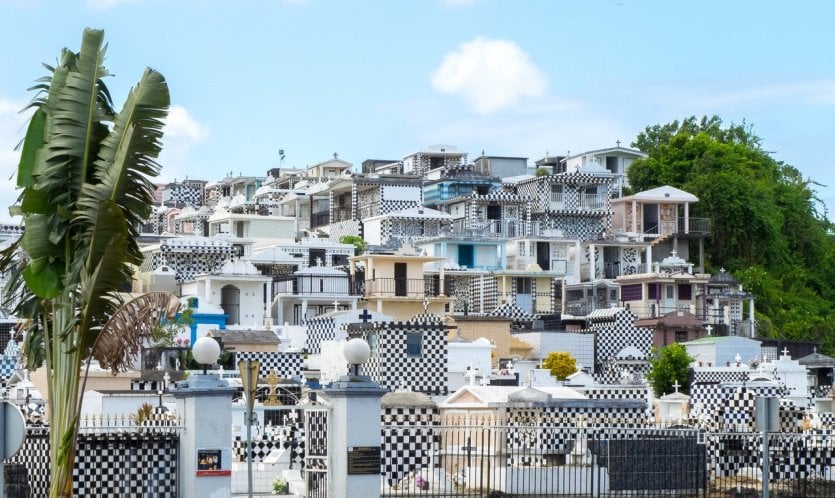
Morne-à-l?Eau cemetery© OkFoto.it - Adobe Stock
Located in the heart of the town, this cemetery is mentioned in guidebooks from all over the world. Terraced on a hillside, it boasts an impressive view of 1,800 earthenware-tiled tombs, arranged in a checkerboard pattern of black and white, and sometimes even pink and blue! According to historians, the first tomb was erected in 1847, 20 years after the commune was founded, by a family of Békés. Surprisingly, some of the vaults resemble small houses, and some were designed by architects. From the farmer to the musician to the Béké planter, all strata of society are represented in this extraordinary place. The most important moment of the year comes at All Saints' Day: every grave, every vault, is carefully cleaned and repainted if necessary. On November1st and 2nd, the cemetery is lit up with a thousand and one candles for November 2nd, the Day of the Dead, and families come to visit their deceased at dusk with impressive bouquets of flowers.
16. Going back in time in the village of Port-Louis
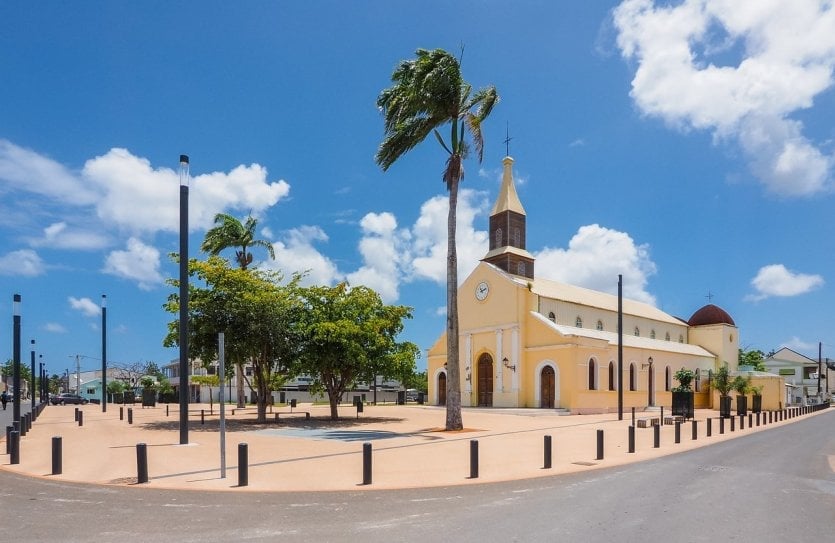
Chapelle de la Visitation in Port-Louis© OkFoto.it - Adobe Stock
Once a sugar town, Port-Louis is now a charming fishing village. During your visit, you'll discover the Godet dwelling, where windmills were used to crush sugar cane during the days of slavery. The village is particularly appreciated for its town center, which seems frozen in time, with its colorful traditional Creole houses. The mangrove-lined Plage du Souffleur is another of Port-Louis's jewels. It's also renowned as one of Guadeloupe's best surf spots, attracting thrill-seeking surf enthusiasts. Port-Louis offers a blend of history, Creole culture and idyllic beach relaxation, making it a destination not to be missed on your visit to Guadeloupe.
17. Visit a rum distillery, a must-see in Guadeloupe
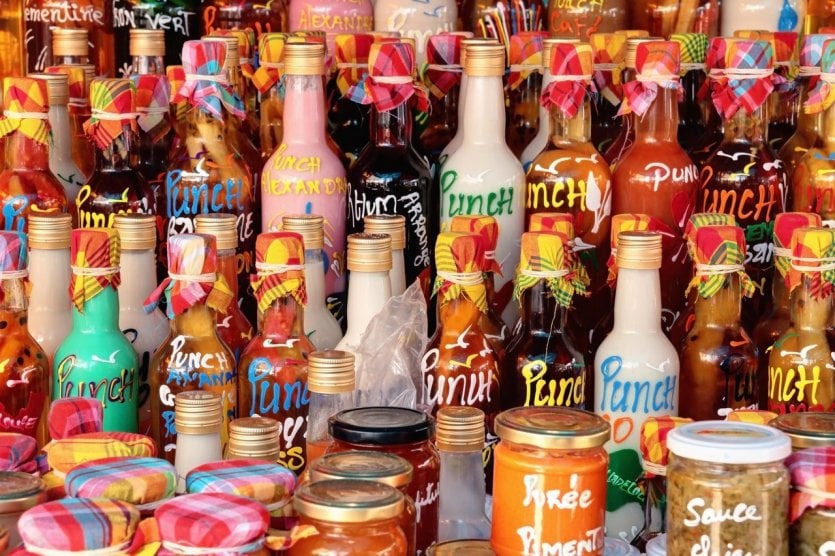
Rum, a must in Guadeloupe© feuerpferd1111 - Adobe Stock
Guadeloupe is renowned for its quality rum production. Visiting the distilleries gives you the opportunity to discover the various stages in the rum-making process, from harvesting the sugar cane to bottling the spirit. As rum is deeply rooted in Guadeloupe's history and culture, you'll learn more about the heritage of this emblematic beverage, its importance in local life and its economic role in the region. You'll also have the opportunity to taste a range of rums in a variety of flavors, from blanc agricole and rhum vieux to spiced and flavored rums. What's more, you' ll be participating directly in the local economy by encouraging the production of artisanal rum and buying products directly from the source.
We recommend a visit to the Damoiseau distillery, one of the island's most popular, or the Bologne distillery, built on the remains of an old sugar dwelling, where you can admire an old sugarcane mill, two stills and a waterwheel.
18. Taste the unmissable local gastronomy
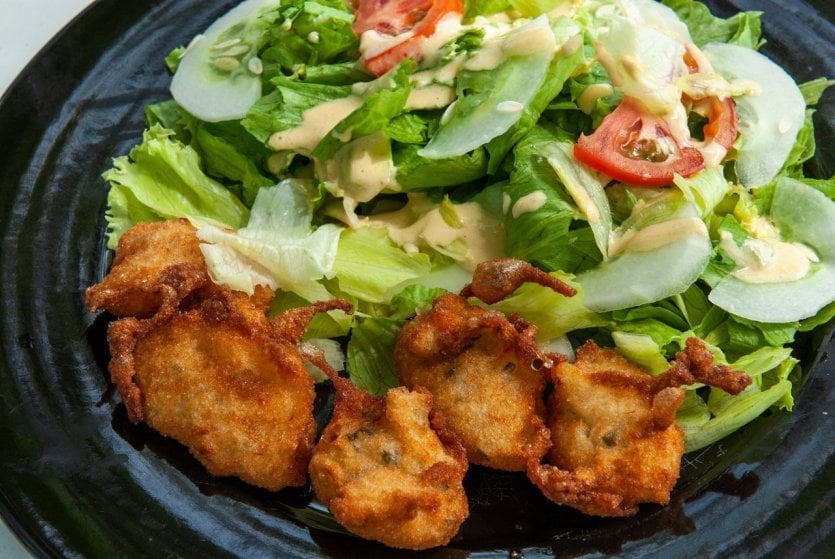
Accras de morue, a Guadeloupe specialty© AlcelVision - Adobe Stock
Guadeloupe's local gastronomy is a must-try! Whether at a restaurant table or a beachside snack bar, you'll embark on a colorful and flavorful journey. We particularly recommend you try the famous accras, those delicious spicy cod fritters, as well as the famous poulet boucané, usually served with rice. And for your snacks or picnics, don't miss the bokit, the local star of sandwiches with its tasty ingredients.
19. Learn to scuba dive
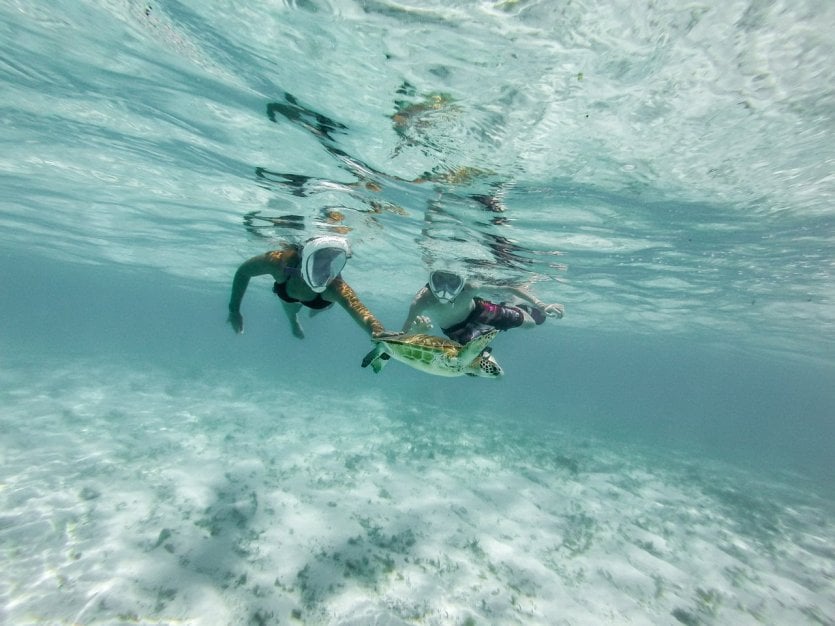
Learn to scuba dive in Guadeloupe© Erwin Barbé - Adobe Stock
Scuba diving for the first time in Guadeloupe is an unforgettable experience, as the waters of Guadeloupe abound in incredible biodiversity, with an impressive variety of tropical fish, colorful corals, sea turtles, rays, sharks and much more. You'll also find a wide variety of dive sites to suit all levels, from shallow coral reefs and shipwrecks to underwater caves and breathtaking drop-offs. Underwater visibility in Guadeloupe is generally excellent, allowing you to fully appreciate the beauty of the seabed. And for beginners, don't worry: diving conditions in Guadeloupe are ideal, with calm waters, pleasant year-round temperatures and few strong currents.
When is the best time to visit Guadeloupe?
Guadeloupe's climate is appealing whatever the time of year, with temperatures that would make any mainlander dream in winter. There are two main seasons. The first is the winter season, from June to December, which is the hottest period, with temperatures reaching up to 35°C, abundant rainfall and relatively weak trade winds. This period also corresponds to the cyclone season, from June to October. The second is the dry season, from January to May, which is slightly cooler, with temperatures ranging from 22 to 25°C. Choose the dry season for the best temperatures and sunny days.
Family activities in Guadeloupe
Guadeloupe offers many family-friendly activities and attractions. Here are a few ideas for things to do in Guadeloupe with your family:
-Beaches: take advantage of the magnificent white-sand beaches and turquoise waters for days of relaxation and family swimming on Grande Anse beach in Deshaies, Sainte-Anne beach or Gosier beach, for example.
-Water parks: visit water parks such as the aquaculture park in Pointe-Noire or the Mangofil leisure park in Sainte-Anne, where you'll find activities such as zip-lines, accrobranche courses and waterslides.
- Hiking: set off on a hike through the island's superb scenery, choosing child-friendly trails. The Guadeloupe National Park offers several family-friendly hiking trails, such as the one leading to the Carbet Falls.
-Botanical gardens: visit Guadeloupe's botanical gardens, such as the Jardin Botanique in Deshaies or the Jardin d'Eau in Petit-Bourg, to discover a wide variety of exotic plants and wildlife.
What to do in Guadeloupe when it rains?
In Guadeloupe, even if it's raining, there are still plenty of things to do to enjoy your stay and occupy your day when the weather is rainy:
-Visiting museums to discover the history of Guadeloupe: the archipelago boasts several interesting museums that will help you discover its history, culture and biodiversity. Museums to visit include the Mémorial ACTe in Pointe-à-Pitre, which traces the history of slavery and the slave trade, and the Musée Schoelcher in Pointe-à-Pitre, dedicated to the history and abolition of slavery.
-Discover rum distilleries and take the opportunity to visit one of the island's rum distilleries. You can learn more about the rum-making process and taste different varieties.
-Explore the island's aquariums and wildlife parks. In case of rain, you can visit an aquarium, such as AquariO'Guadeloupe, to observe marine life up close. Alternatively, head to the Guadeloupe wildlife park, where you can admire a wide variety of exotic animals.


